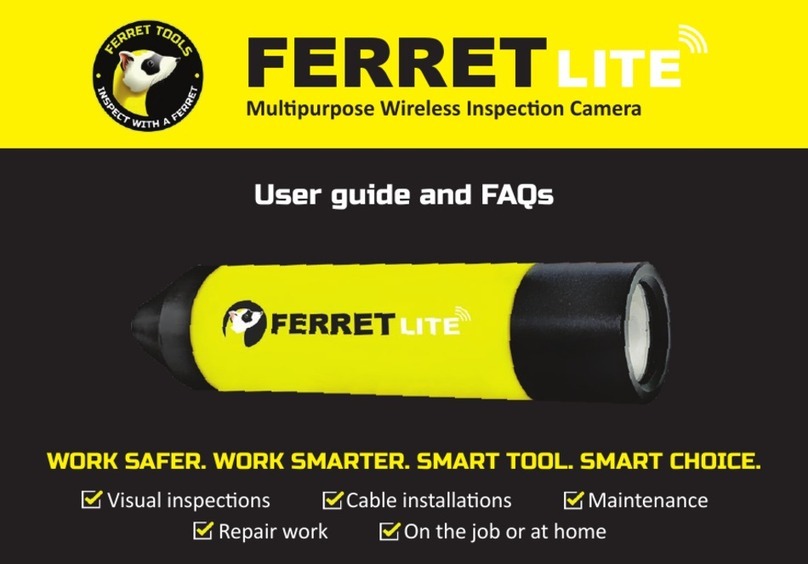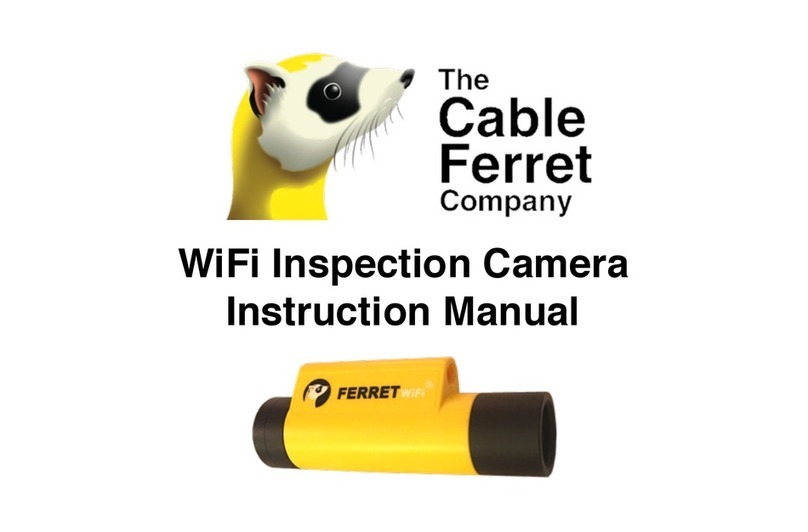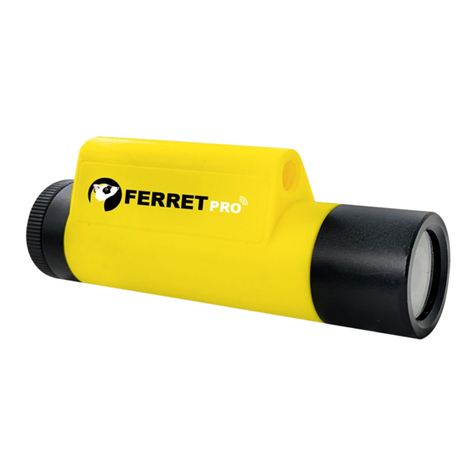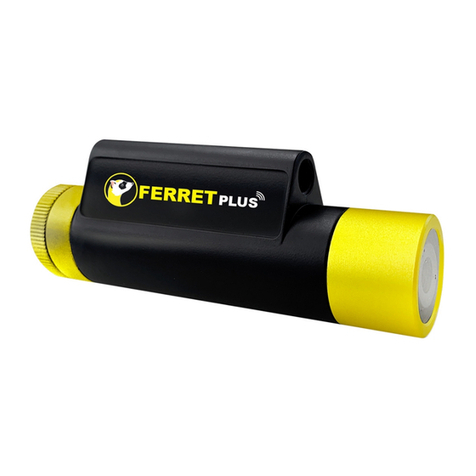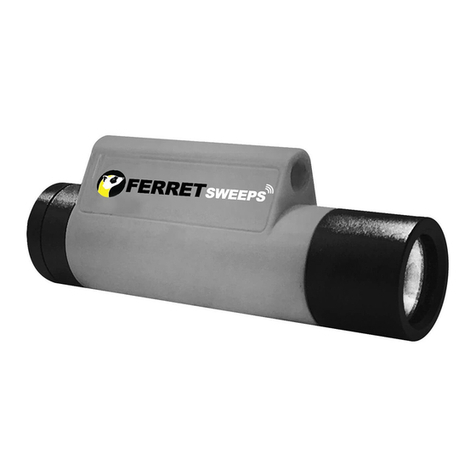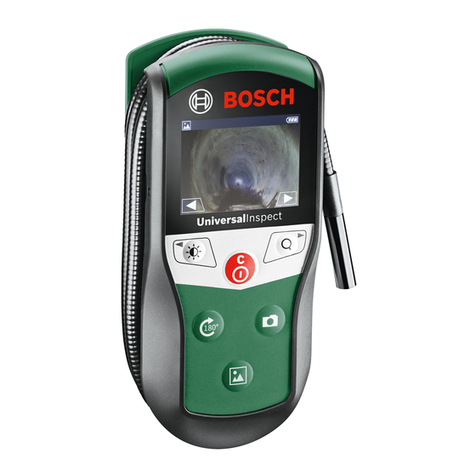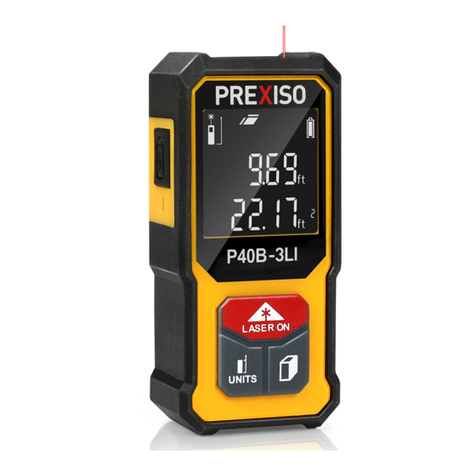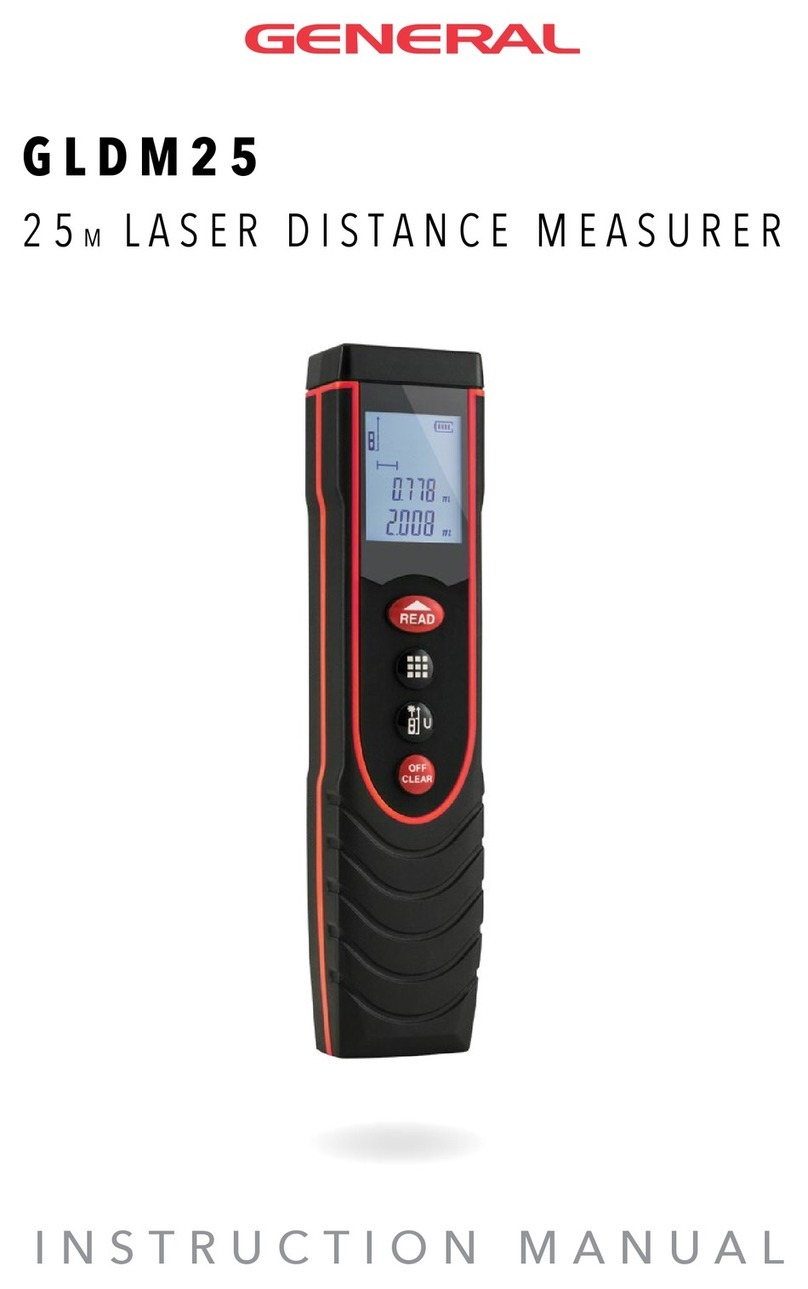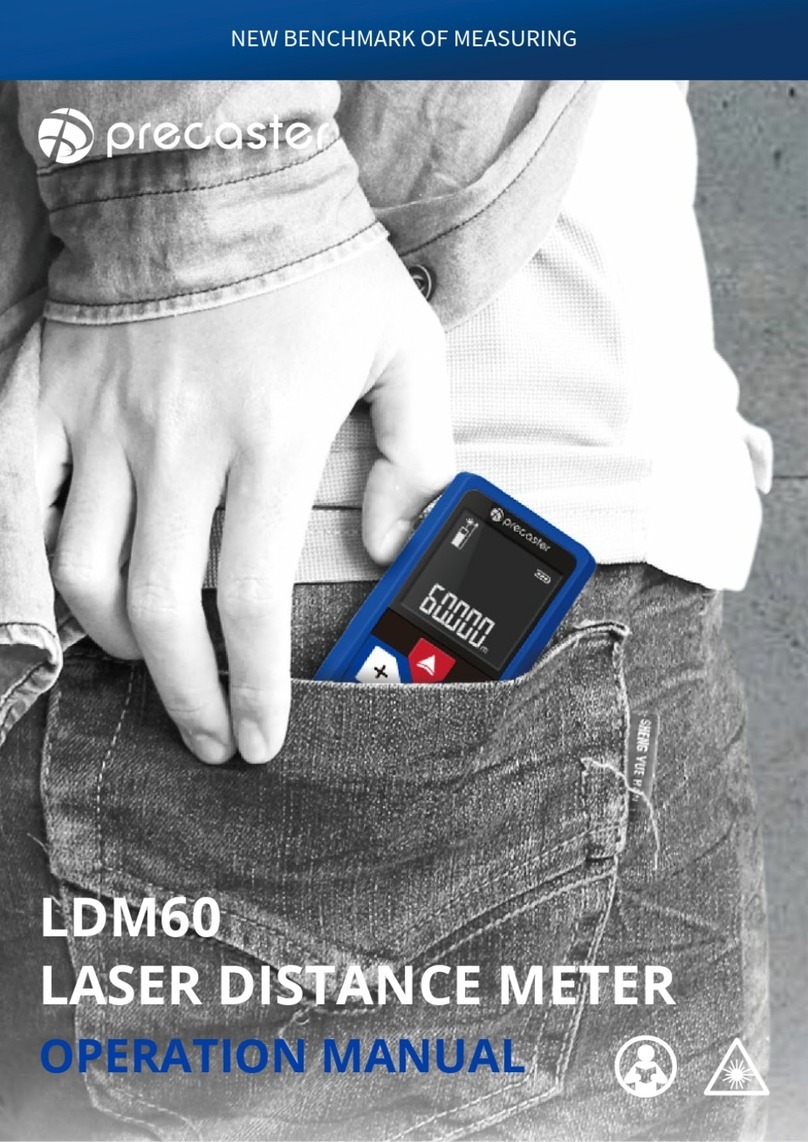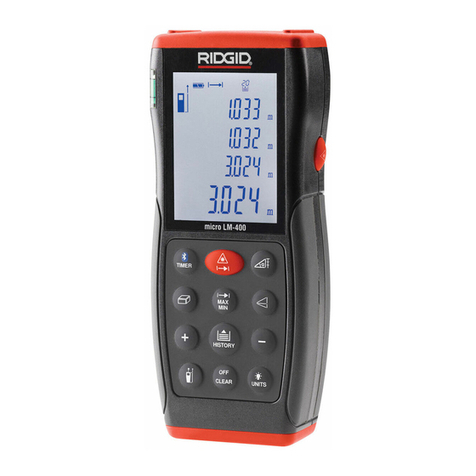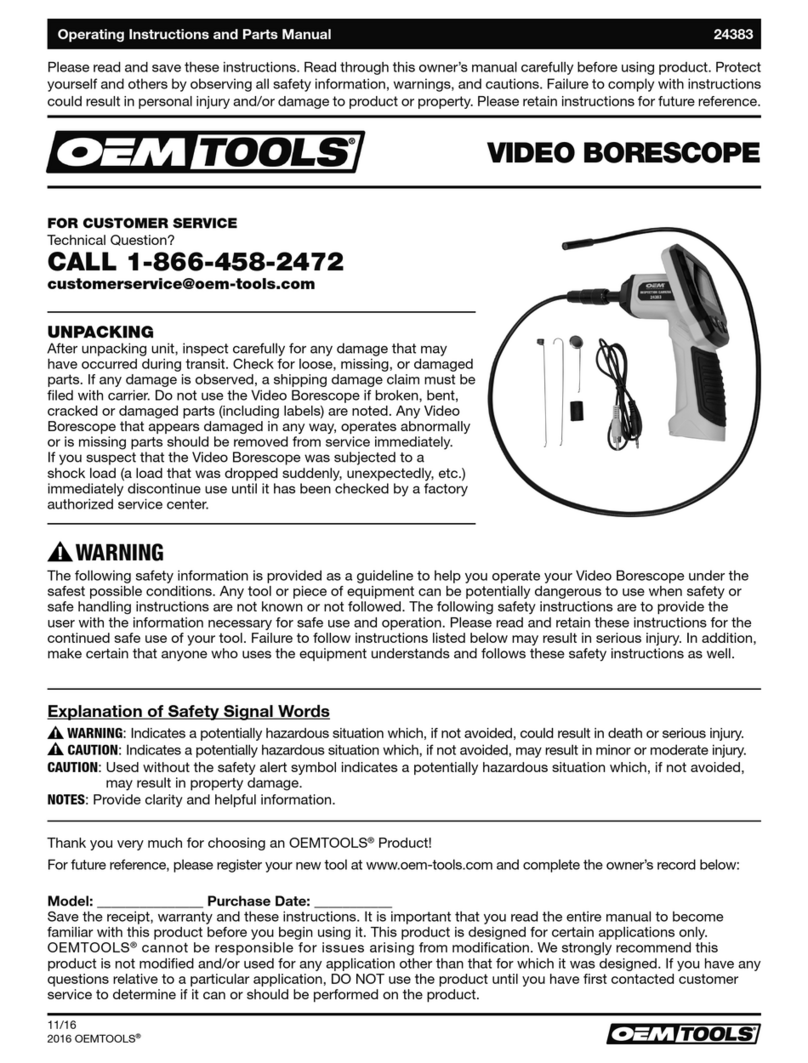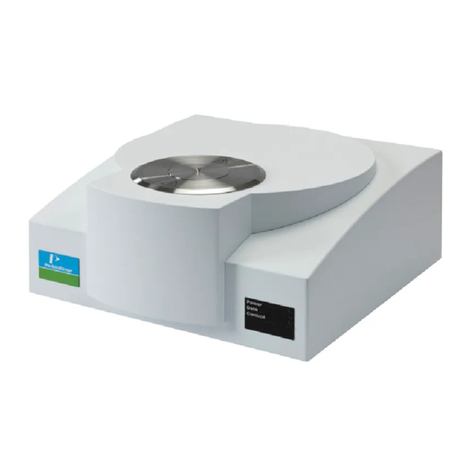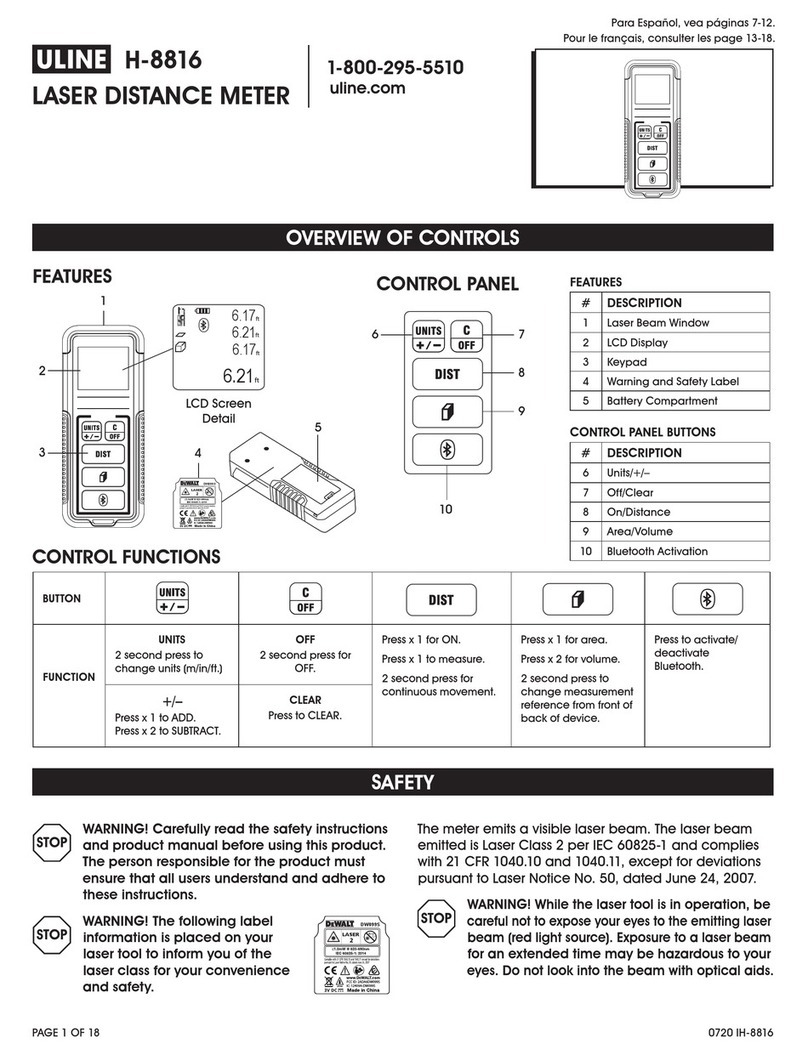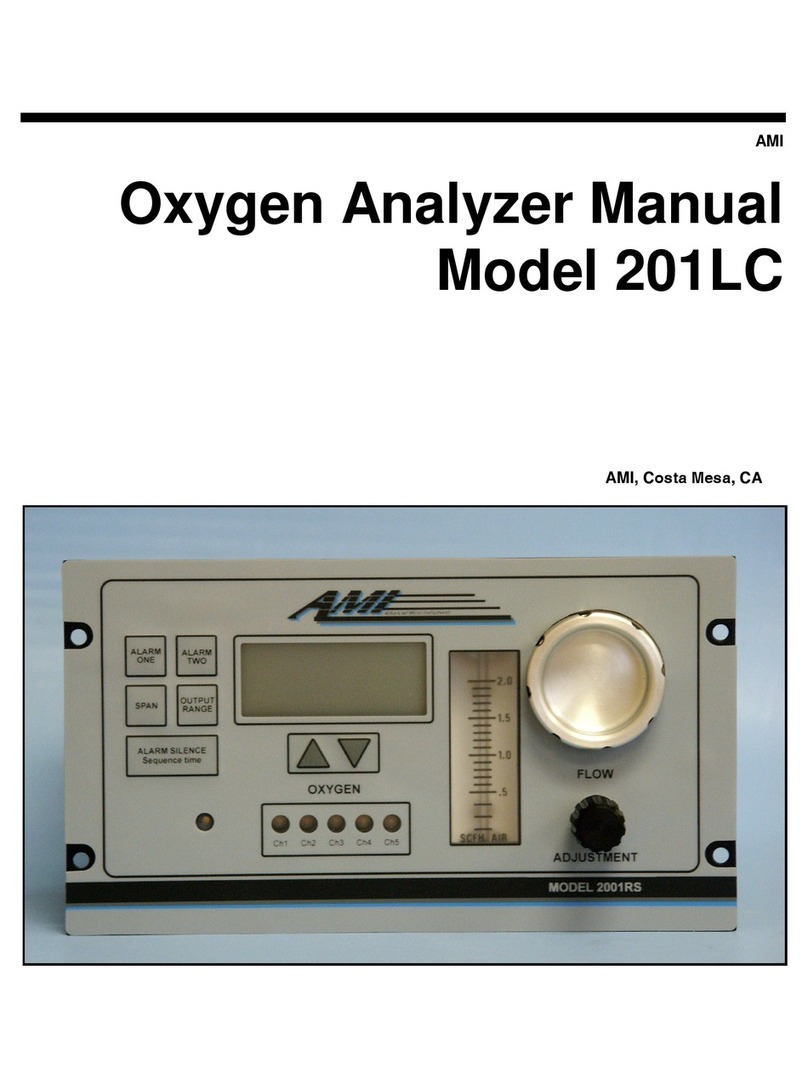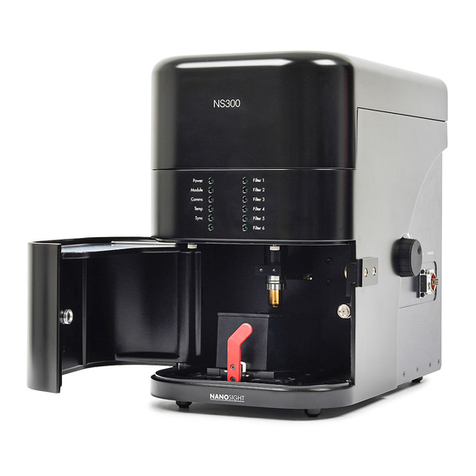Ferret Leak Locator User manual

TM 1
Ferret Leak Locator
User Manual
TM
ferret-technology.com

Ferret
Blocks the flow in the leaking
pipe when inflated
TM 3
1.1 Ferret Controls: how to adjust
the pressure in the Ferret.
Controls
Ferret Pump
Inflates/deflates the Ferret
Ferret Pressure Gauge
Shows the pressure inside the Ferret

TM 4
1.2 Leaking Pipe Controls: how to
adjust the flow in the leaking pipe.
Controls
Flow Gauge
Shows when water is flowing through
the Ferret Leak Locator
Pipe Pressure Gauge
Shows the pressure inside the leaking pipe
Flow Valve
Turns flow to the leaking pipe on and off

TM 5
1.3 Leaking Pipe Controls: how to adjust
the working pressure in the leaking pipe.
Controls
Pressure Regulator
Controls the working pressure.
Pull out to adjust and push in to lock
Inlet Pressure Gauge
Shows the pressure within the
incoming water supply
Set Pressure Gauge
Shows the working pressure
in the leaking pipe

TM 6
Connecting the Ferret Leak Locator
2.1 Connecting a water supply
Step 1.
Turn o the incoming water supply.
Remove a fitting or cut the pipe, then use
the black Inlet Hose and a suitable fitting
to connect the incoming water supply to the
inlet on the Ferret Leak Locator.
The connection hoses have internal O-ring
seals at the ends that connect to the Ferret
Leak Locator. They should only be hand
tightened.
Do not use a wrench
Incoming water supply

TM 7
Connecting the Ferret Leak Locator
2.1 Connecting a water supply
Step 2.
Make sure the Flow Valve is in the o
position and then turn the incoming
water supply back on.
You should now see pressure registering
on the Set and Inlet Pressure Gauges.

TM 8
Connecting the Ferret Leak Locator
2.2 Fitting the Ferret to the Ferret Leak Locator
Step 1.
Pass the yellow Ferret Pipe through
the Outlet Hose and connection
fitting, then connect the Outlet Hose
to the Ferret Leak Locator.
Step 2.
Remove the Green Cap from
the end of the Ferret Pipe and
put it here for safe keeping.
IMPORTANT:
Always replace the Green
Cap as soon as the Ferret
is removed to prevent air
and dirt from getting into
the Ferret inflation system.
Step 3.
Screw the Ferret on
hand tight.

TM 9
Connecting the Ferret Leak Locator
2.3 Stretch and test the Ferret.
Use the Ferret Pump to inflate the Ferret to
check it is not damaged. Then deflate the Ferret.
IMPORTANT:
A new Ferret must first be stretched to a larger
diameter than the internal bore of the leaking pipe.

TM 10
Connecting the Ferret Leak Locator
2.4 Connecting to the leaking pipe
Step 1.
Feed the Ferret into the
leaking pipe and then
connect the Outlet Hose
to the leaking pipe.
Step 2.
Open the Flow Valve
and wait for the pipe
pressure to register.
Step 3.
You should now see the
leak flow registering
on the Flow Gauge.
Step 4.
Open a vent at the far
end of the leaking pipe.
The Flow Gauge will
now spin faster.
IMPORTANT:
If there is no flow you
will need to use the
Pressure Regulator to
increase the pressure
in the leaking pipe until
the leak flow registers

TM 11
Moving the Ferret along the leaking pipe
3.1 Inflating the Ferret to block the pipe
Step 1.
Turn the Flow Valve o.
Step 2.
Turn the Ferret Pump to
inflate the Ferret to
approximately 1bar (15psi)
above the working pressure.
Step 3.
Turn the Flow Valve back
on and wait for the Flow
Gauge to stop.
IMPORTANT:
If the Ferret starts to move or the Ferret
Winder turns, close the Flow Valve and
increase the pressure in the Ferret,
then
open Flow Valve again.

TM 12
Moving the Ferret along the leaking pipe
Step 1.
Slowly turn the Ferret Pump
to deflate the Ferret.
Step 2.
At the same time watch the
Ferret Pipe and Ferret Winder
to see when they start to move.
As soon as they start to move
stop deflating the Ferret.
3.2 Moving the Ferret forwards
IMPORTANT:
Always make sure the
Ferret pipe is moving
through the Outlet Hose
when you are turning the
Ferret Winder clockwise
or the Ferret Pipe could
become tangled inside
the Ferret Leak Locator
.
Note.
When working with smaller
Ferrets and in metallic pipes
you may need to help the
Ferret Winder turn to allow
the Ferret to move freely.

TM 13
Moving the Ferret along the leaking pipe
3.3 Restrictions in the pipe
The Ferret will stop if it meets
a restriction in the pipe before
it gets to the leak.
Note.
You will see the Ferret Winder stop turning
and no flow registering on the Flow Gauge.

TM 14
Moving the Ferret along the leaking pipe
3.4 Passing through a restriction
Step 1.
Locate a reference point
on the Ferret Pipe.
Step 2.
Turn the Ferret Winder in the Rewind
direction (A) to tension the Ferret Pipe and
then turn the Ferret Winder back a quarter
turn (B) to put some slack in the Ferret Pipe.
Step 3.
Slowly reduce the pressure
in the Ferret until the water
in the pipe pushes it through
the restriction. Watch the
reference point to see when
this happens.
REFERENCE
IMPORTANT:
Once the deflated Ferret
is back in the larger diameter
pipe it will stop but the
Flow Gauge will register
the water flowing past it.
REFERENCE
(B)
(A)

TM 15
Moving the Ferret along the leaking pipe
Step 1.
Turn the Flow Valve o
to stop the Ferret.
Step 2.
Turn the Ferret Pump to
deflate the Ferret.
Step 3.
Turn the Ferret Winder anti-clockwise,
as shown on the label, to move the
Ferret backwards along the leaking pipe.
IMPORTANT:
If the Ferret gets stuck don’t
force the Ferret Winder,
disconnect the clear Outlet
Hose and pull directly on the
yellow Ferret Pipe instead.
3.5 Stopping the Ferret and moving it backwards

TM 16
Locating the leak
4.1 Leak testing a section of pipe
Step 1.
Stop the Ferret by closing
the Flow Valve and inflate the
Ferret so it blocks the pipe
Step 2.
Turn the flow back on to the pipe.
• If the Ferret is before the leak the flow gauge will stop.
• If it keeps turning the Ferret is after the leak.
IMPORTANT:
Check that no water is
flowing through the open
vent. This confirms that the
Ferret is blocking the pipe
and that the Flow Gauge is
registering the flow of
water escaping from the
pipe through the leak.

TM 17
4.2 Pinpointing the leak
Step 1.
Move the Ferret backwards
or forwards as required and
repeat the leak test on the
previous page.
Locating the leak
Step 2.
Repeat this process until
the leak is pinpointed to
within a quarter turn of
the Ferret Winder
4.2 Pinpointing the leak

TM 18
Locating the Ferret from above ground
5.1 Tracing the line of the pipe (without sonde)
Step 1.
Connect a signal generator to the
terminal on the Ferret Winder.
Step 2.
Trace the line of the pipe as per the
manufacturer’s instructions for
your tracing device.

TM 19
Locating the Ferret from above ground
5.2 Tracing the line of the pipe (with sonde)
Step 1.
Connect the Trace Lead supplied with
the Ferret Leak Locator to the terminal
on the Ferret Winder.
Step 2.
Connect a 33kHz signal generator
to the red Trace Lead.
Step 3.
Trace the line of the pipe as per the
manufacturer’s instructions for
your tracing device.

TM 20
Locating the Ferret from above ground
5.3 Measuring the distance to the Ferret
Step 1.
Find a distance mark on the
yellow Ferret Pipe inside the
clear Outlet Hose.
IMPORTANT:
Always rewind the
Ferret before you start
digging. You might forget
later and then cut the
Ferret Pipe when making
the repair!
Step 2.
Place a measuring wheel on the Outlet Hose so it lines up
with the distance mark and then measure out the indicated
distance along the traced line of the pipe
Table of contents
Other Ferret Analytical Instrument manuals
Popular Analytical Instrument manuals by other brands
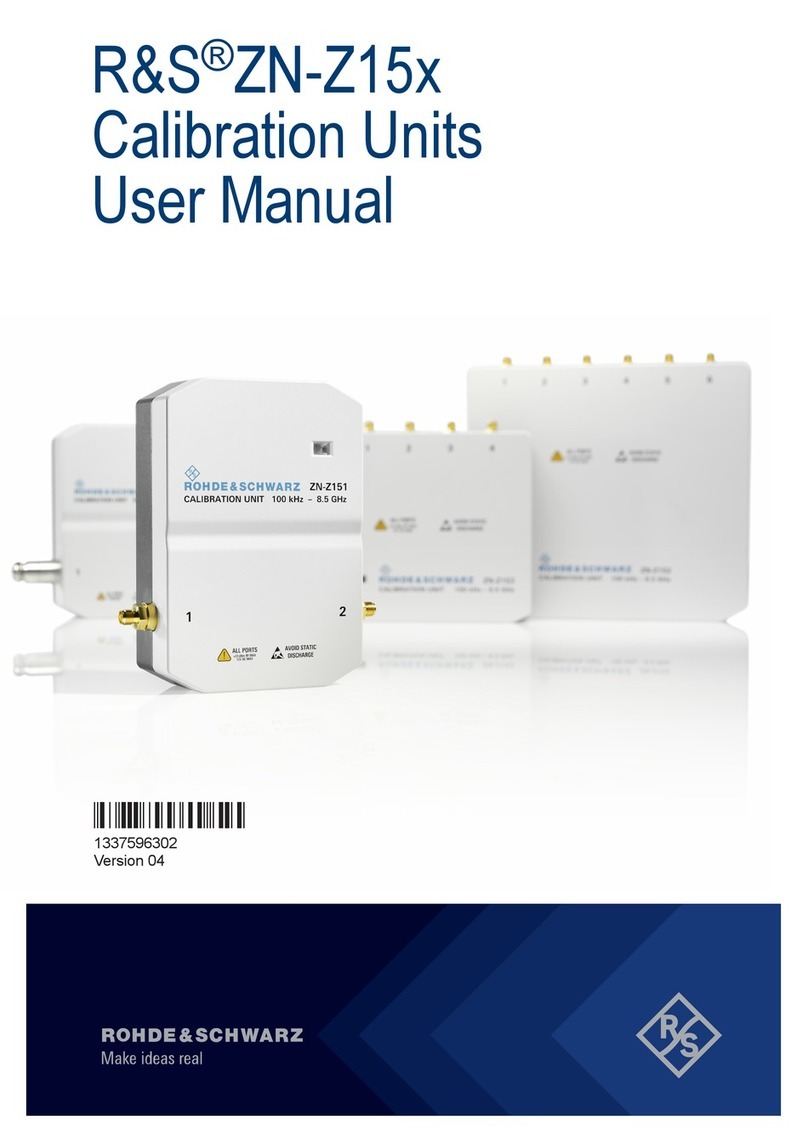
R&S
R&S ZN-Z15 Series user manual

Leica Geosystems
Leica Geosystems DISTO plus user manual

Artistic License
Artistic License Commissioner dali user guide
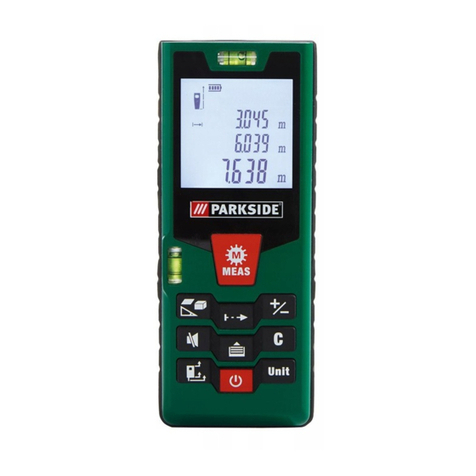
Parkside
Parkside PLEM 50 A1 Operation and safety notes
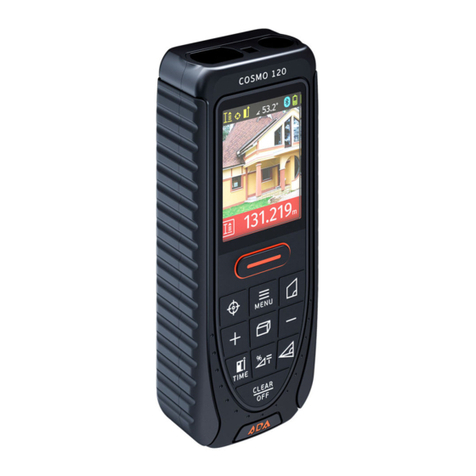
ADA INSTRUMENTS
ADA INSTRUMENTS COSMO 120 video operating manual
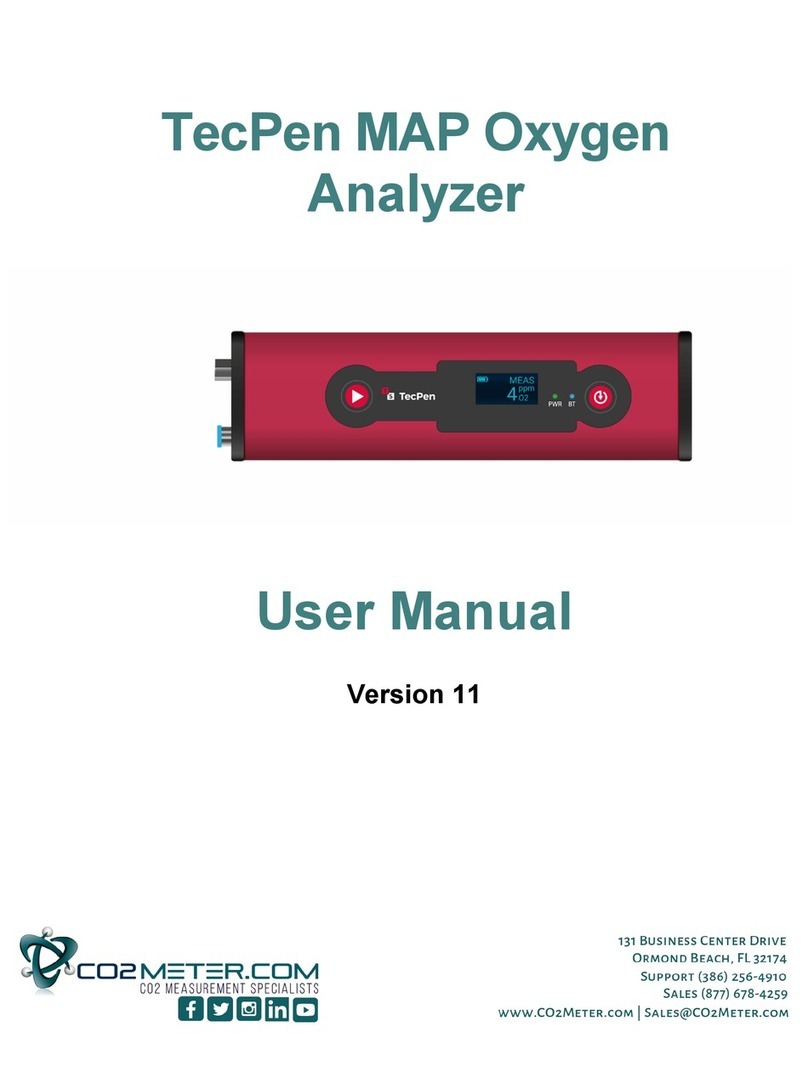
Co2meter
Co2meter TecPen MAP user manual

